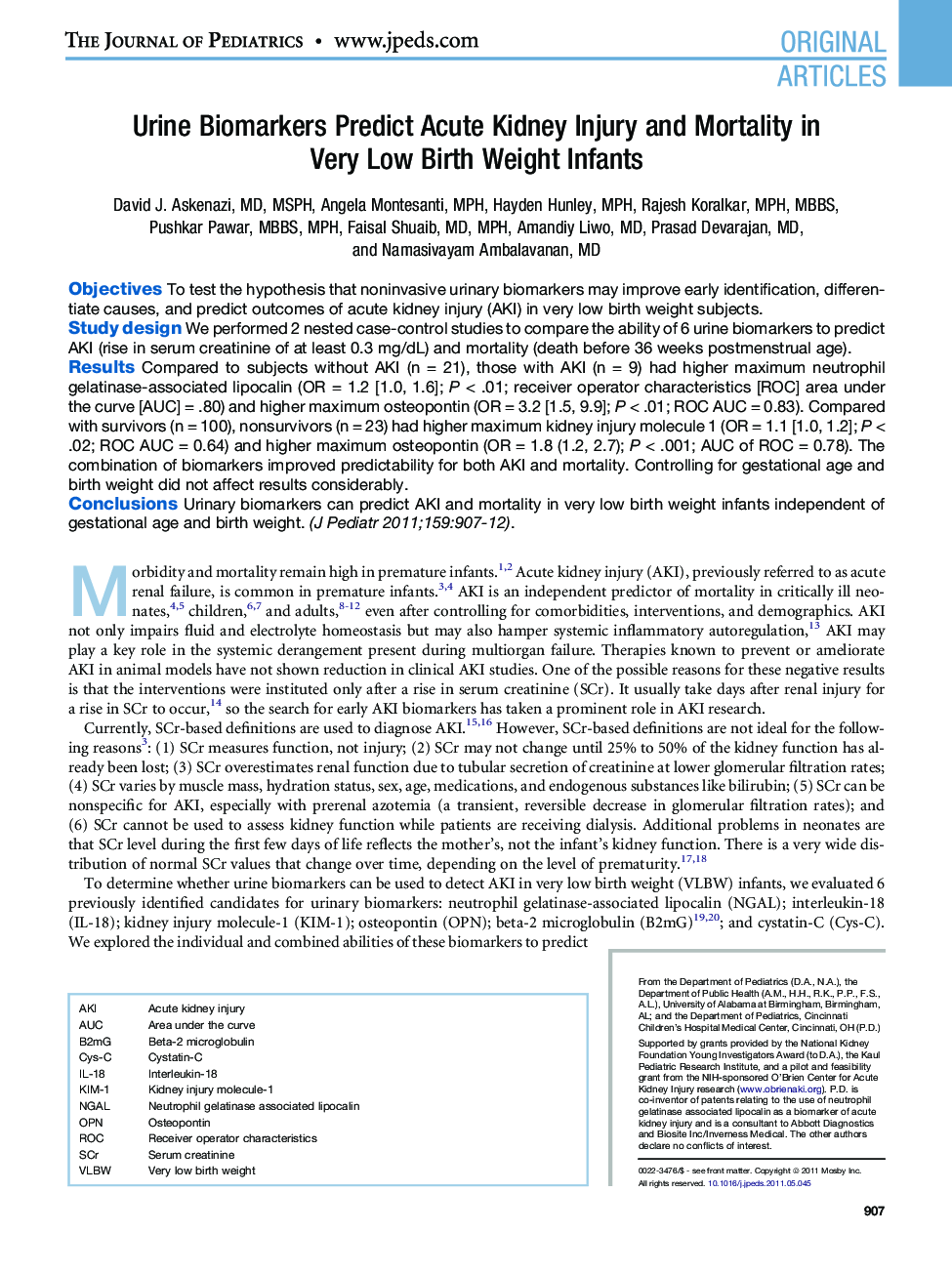| Article ID | Journal | Published Year | Pages | File Type |
|---|---|---|---|---|
| 6224413 | The Journal of Pediatrics | 2011 | 7 Pages |
ObjectivesTo test the hypothesis that noninvasive urinary biomarkers may improve early identification, differentiate causes, and predict outcomes of acute kidney injury (AKI) in very low birth weight subjects.Study designWe performed 2 nested case-control studies to compare the ability of 6 urine biomarkers to predict AKI (rise in serum creatinine of at least 0.3 mg/dL) and mortality (death before 36 weeks postmenstrual age).ResultsCompared to subjects without AKI (n = 21), those with AKI (n = 9) had higher maximum neutrophil gelatinase-associated lipocalin (OR = 1.2 [1.0, 1.6]; P < .01; receiver operator characteristics [ROC] area under the curve [AUC] = .80) and higher maximum osteopontin (OR = 3.2 [1.5, 9.9]; P < .01; ROC AUC = 0.83). Compared with survivors (n = 100), nonsurvivors (n = 23) had higher maximum kidney injury molecule 1 (OR = 1.1 [1.0, 1.2]; P < .02; ROC AUC = 0.64) and higher maximum osteopontin (OR = 1.8 (1.2, 2.7); P < .001; AUC of ROC = 0.78). The combination of biomarkers improved predictability for both AKI and mortality. Controlling for gestational age and birth weight did not affect results considerably.ConclusionsUrinary biomarkers can predict AKI and mortality in very low birth weight infants independent of gestational age and birth weight.
